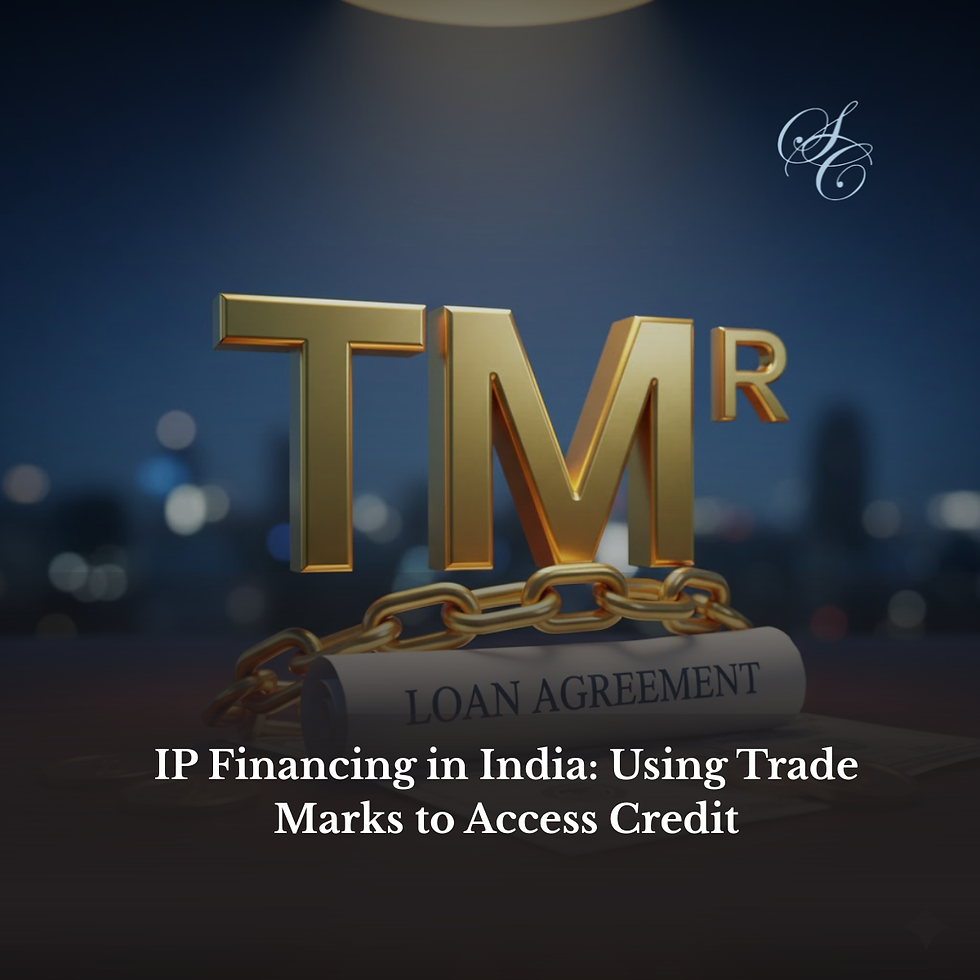Similar Marks for Dissimilar Goods in the Same Class
- Sarwajeet Singh
- Apr 9, 2019
- 3 min read
Registration of deceptively similar marks for different goods in different classes is almost never an issue! However, what about registration of deceptively similar trade marks for different goods in the same class? In most, if not all, developed economies around the world courts and tribunals allow registration of marks that may be deceptively similar for different goods in the same class. Say, registration of mark ABC for sunglasses in Class 9 would ordinarily be allowed despite the presence, on a Trade Marks Register, of a mark ABS for software, also in Class 9.
To date the Trade Marks Registry issues refusals to register marks that may be deceptively similar to earlier marks and cover goods in the same class as an applied-for-mark, despite the different nature of the rival goods. However, after the judgment of the Supreme Court in Nandhini Deluxe v. Karnataka Co-Operative Milk Producers Federation Ltd., AIR 2018 SC 3516, the law is quite clear. As per the Hon’ble Court, registration of a mark that is deceptively similar to a prior registered mark in the same class is permissible, provided that the following conditions are met: (a) there is no overlap in the goods and the manner in which the goods are traded is different; and (b) if both the marks are in use, the adoption of the subsequent mark is honest and concurrent.
In Nandhini, the rival marks of the parties were as follows:

The Respondent, Karnataka Co-Operative Milk Producers Federation Ltd., was using its mark for milk and milk products, whereas the Appellant, Nandhini Deluxe was using its mark for various foodstuffs besides milk and milk products.
The Hon’ble Supreme Court held that the Respondent, Nandhini Deluxe was entitled to seek registration of its mark, and such registration would not infringe the rights of the owner of the prior registered mark NANDINI Device in the same class. The Supreme Court reasoned that, inter alia, although the goods of both parties belonged to the same classes, the goods themselves were different. This difference was further fortified by the fact that, while the owner of the prior registered mark NANDINI Device was a cooperative society selling milk products, the applicant of the subsequent mark NANDHINI Device ran a chain of restaurants.
In this regard, the Supreme Court relied on its previous decision in the case of Vishnudas Trading v. Vazir Sultan Tobacco Co. Ltd., AIR 1996 SC 2275 in which it held that the owner of the prior registered mark CHARMINAR cannot be allowed to enjoy monopoly over the entire class of goods, as it dealt only in specific goods belonging to that class, namely, cigarettes. Applying this principle, the Supreme Court observed that the owner of the prior registered mark NANDINI Device cannot be allowed to enjoy monopoly over the entire class of goods, as it dealt only in milk and milk products, and had no intention to expand its business to other goods belonging to that class.
Furthermore, the Supreme Court noted that the owner of the prior registered mark NANDINI Device started using the mark in 1985 and the applicant of the subsequent mark NANDHINI Device started using the mark in 1989. Since the owner of the prior registered mark NANDINI Device could not show that by the year 1989, the mark had acquired distinctiveness, i.e., within four years of the adoption of the mark, it was to be presumed that the adoption of the subsequent mark NANDHINI Device by the applicant was honest and concurrent. Therefore, despite the spelling and pronunciation of the rival marks in the local language (Kannada) being the same, the Supreme Court held that the applicant of the mark NANDHINI Device was entitled to seek registration of its mark, and such registration would not infringe the rights of the owner of the prior registered mark NANDINI Device.
On one hand, the Supreme Court’s decision is a relief to traders who have long been using marks that are deceptively similar to prior registered marks in the same class, but, for different goods. On the other hand, the decision has raised concerns, such as registration of a mark is no longer an assurance that a deceptively similar mark cannot be registered in the same class.




Comments